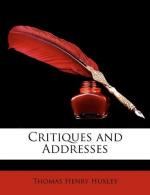Twenty years later, a pupil of Marsigli, the young Marseilles physician, Peyssonel, conceived the desire to study these singular sea-plants, and was sent by the French Government on a mission to the Mediterranean for that purpose. The pupil undertook the investigation full of confidence in the ideas of his master, but being able to see and think for himself, he soon discovered that those ideas by no means altogether corresponded with reality. In an essay entitled “Traite du Corail,” which was communicated to the French Academy of Science, but which has never been published, Peyssonel writes:—
“Je fis fleurir le corail dans des vases pleins d’eau de mer, et j’observai que ce que nous croyons etre la fleur de cette pretendue plante n’etait au vrai, qu’un insecte semblable a une petite Ortie ou Poulpe. J’avais le plaisir de voir remuer les pattes, ou pieds, de cette Ortie, et ayant mis le vase plein d’eau ou le corail etait a une douce chaleur aupres du feu, tous les petites insectes s’epanouirent ... L’Ortie sortie etend les pieds, et forme ce que M. de Marsigli et moi avions pris pour les petales de la fleur. Le calice de cette pretendue fleur est le corps meme de l’animal avance et sorti hors de la cellule."[1]
[Footnote 1: This extract from Peysonnel’s manuscript is given by M. Lacaze Duthiers in his valuable “Histoire Naturelle du Corail” (1866).]
The comparison of the flowers of the coral to a “petite ortie” or “little nettle” is perfectly just, but needs explanation. “Ortie de mer,” or “sea-nettle,” is, in fact, the French appellation for our “sea-anemone,” a creature with which everybody, since the great aquarium mania, must have become familiar, even to the limits of boredom. In 1710, the great naturalist, Reaumur, had written a memoir for the express purpose of demonstrating that these “orties” are animals; and with this important paper Peyssonel must necessarily have been familiar. Therefore, when he declared the “flowers” of the red coral to be little “orties,” it was the same thing as saying that they were animals of the same general nature as sea-anemones. But to Peyssonel’s contemporaries this was an extremely startling announcement. It was hard to imagine the existence of such a thing as an association of animals into a structure with stem and branches altogether like a plant, and fixed to the soil as a plant is fixed; and the naturalists of that day preferred not to imagine it. Even Reaumur could not bring himself to accept the notion, and France being blessed with Academicians, whose great function (as the late Bishop Wilson and an eminent modern writer have so well shown) is to cause sweetness and light to prevail, and to prevent such unmannerly fellows as Peyssonel from blurting out unedifying truths, they suppressed him; and, as aforesaid, his great work remained in manuscript, and may at this day be consulted by the curious in that state, in the “Bibliotheque du Museum d’Histoire Naturelle.”




